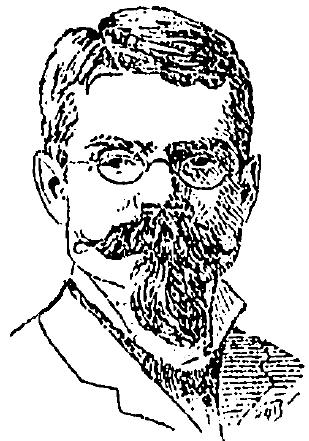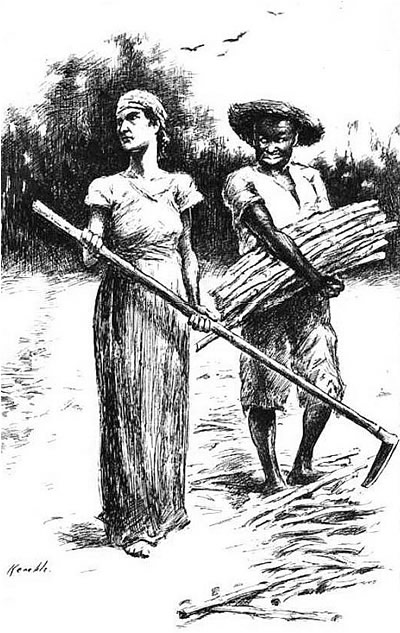
A History of and Guide to
UNIFORM EDITIONS OF MARK TWAIN'S WORKS
"This time 'Pudd'nhead Wilson' is a success! Even Mrs.
Clemens, the most difficult of critics, confesses it and without reserves
or qualifications."
- Samuel Clemens to Fred J. Hall, 30 July 1893
Chapter 17
Brief Overview of Volume 14:
Pudd'nhead Wilson and Those Extraordinary Twins
Composition and First Publication
The history of the composition of Pudd'nhead Wilson
is a complicated one. The most comprehensive examination of the texts of
the various manuscripts and the early editions of the work has been conducted
by Benjamin Griffin for the University of California Press Works
edition of Pudd'nhead Wilson with Those Extraordinary Twins (2024).
Griffin believes Clemens became aware of the Tocci brothers Siamese twins
when he saw an article about them in the June 25, 1892 Scientific American
Supplement on his trip New York that summer. He was inspired to write
a farce titled "Those Extraordinary Twins." A few months later,
in September 1892, his attention was captured by Francis Galton's new book
Finger Prints, a ground-breaking study on how to identify people
using fingerprints. Clemens eventually revised his twins story into an entirely
different story. He retitled the story "Pudd'nhead Wilson." After
initial efforts to get it published with his own firm Webster and Company
failed due to financial constraints, Clemens extensively edited his original
manuscript of about 81,500 words. In desperate need of cash, he aimed to
sell it for magazine publication. The final story that was eventually published
contains about 53,000 words in 22 chapters and is a tale of two babies,
one white and one mulatto, who are switched at birth.
In September 1893 Clemens arranged to have the story serialized
in Century Magazine whose editors made unauthorized revisions to
the text that he was powerless to prevent. The serial ran from December
1893 to June 1894 with six illustrations by Louis Loeb (b. 1866 - d. 1909).
In November 1894 American Publishing Company issued the first book edition,
based on the Century Magazine version, as a subscription book. In
order to add bulk to the relatively short book, publisher Frank Bliss added
the excised portion of the original story and called it "Those Extraordinary
Twins" along with a short explanation from Clemens describing its relationship
to his final version. American Publishing Company titled the book The
Tragedy of Pudd'nhead Wilson and the Comedy Those Extraordinary Twins.
The book contained about 432 illustrations by relatively unknown artists
Frank M. Senior (b. 1849 - d. 1903) and Calvin H. Warren (b. 1853 - d. 1914).
The original illustrations appeared around the margins of each page and
served a purpose of further adding bulk to the text. Clemens's British publisher
Chatto and Windus published the book about the same time and that edition
did not include "Those Extraordinary Twins." The British edition
issued by Chatto and Windus, also in November 1894, utilized the six original
illustrations drawn by Louis Loeb for Century Magazine.
W. H. W. Bicknell's Contributions
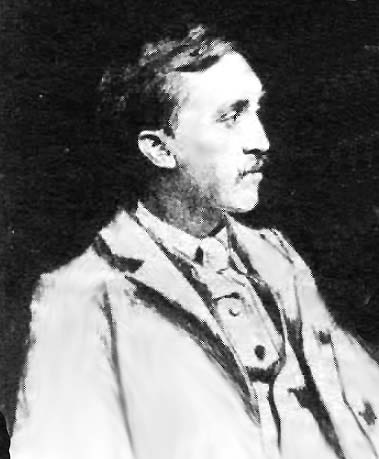
William
Harry Warren Bicknell
photo courtesy of the Winchester, Massachusetts Archival Center |
Frank Bliss hired new illustrators for the 1899 uniform edition.
Artist and etcher William Harry Warren Bicknell (b. 1860 - d. 1947)
was born in Boston, Massachusetts, the son of a grocer. Bicknell graduated
from the Boston Latin School in 1878 and later studied at the Boston
Museum of Fine Arts. He was a pupil of Otto Grundmann and Frederic
Crowningshield. Bicknell etched a number of frontispieces made from
photographs of Clemens that were used throughout the set. Bicknell's
etching of the Tiffany monogram appears as a title page in every volume
of the Autograph Edition,
Edition De Luxe, Japan
Edition, Author's
De Luxe Edition, and the Royal
Edition. All of these editions began issuing in 1899.
Less expensive editions such as Underwood,
Riverdale, and
Hillcrest feature the Tiffany title
page in Volume 1 only. It was eliminated altogether from the Author's
National Edition.
|
Frontispiece Portrait by Charles Noel Flagg
The frontispiece for Volume 14, Pudd'nhead Wilson and
Those Extraordinary Twins, represents the first departure in the 1899
series away from Bicknell's engraved frontispieces. The frontispiece is
from an 1891 painting of Clemens by Charles Noel Flagg (b. 1848 - d. 1916).
Born in New York, Flagg had studied art in Paris for ten years. He was a
resident of Hartford, Connecticut when he painted Clemens's portrait. Flagg
was a well-regarded artist, teacher, and founder of the Connecticut League
of Art Students. He was also a contributor to Atlantic Monthly magazine
and other publications.
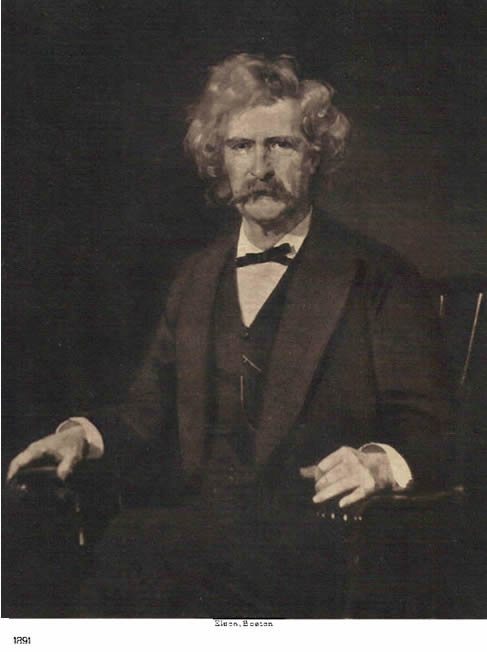
Frontispiece
by Elson Company of Boston from painting of Clemens by Charles Noel Flagg,
1891
The frontispiece is signed "Elson, Boston." The
Elson Company of Boston was founded by Alfred Walter Elson (b. 1859 - d.
1944) who began in the art printing business in 1888. Elson also became
associated with Harvard University as a lecturer on printing and publishing.
Edward Windsor Kemble, Illustrator
| Edward Windsor Kemble (b. 1861 - d. 1933) was born in Sacramento,
California, the son of Edward Cleveland Kemble who founded the San
Francisco Alta California. His first attempts at drawing were those
of Indians drawn when he was about eleven years old and traveling with
his father throughout the West. In the winter of 1880-1881 he attended
class in New York at the Art Students' League. After that brief stint,
Kemble became largely self-taught and obtained a job as a cartoonist
at New York's Daily Graphic. When Life magazine was founded
in 1883 he became a contributor to that publication. When Clemens saw
some of his Negro drawings in Life magazine, he recruited him
to illustrate the first edition of Huckleberry Finn. After the
success of Huckleberry Finn, Century magazine made him
an offer for all of his work outside of book publications. He remained
with Century until 1891. Kemble died in 1933 with a lengthy list
of book illustration work to his credit. |
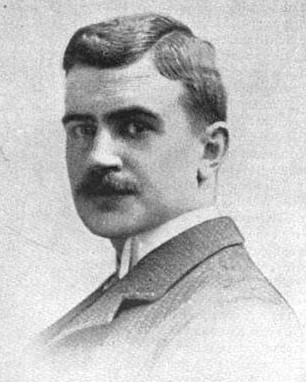
Edward
Windsor Kemble |
In a letter from Kemble to Frank Bliss dated May 16, 1898, Kemble told
Bliss he would be happy to join the "goodly company" of artists
and provide illustrations for "a volume of Mark Twain." Bliss
had also awarded Kemble the illustrating assignment for the 1899 edition
of Adventures of Huckleberry Finn. For Pudd'nhead Wilson and Those
Extraordinary Twins, Kemble provided six new full-page pictures to illustrate
the Pudd'nhead Wilson chapters of the book.
One of Kemble's illustrations titled "Buckstone Training with the
Rum Party" was hand-colored and used as the frontispiece for the 1901
Riverdale Edition.
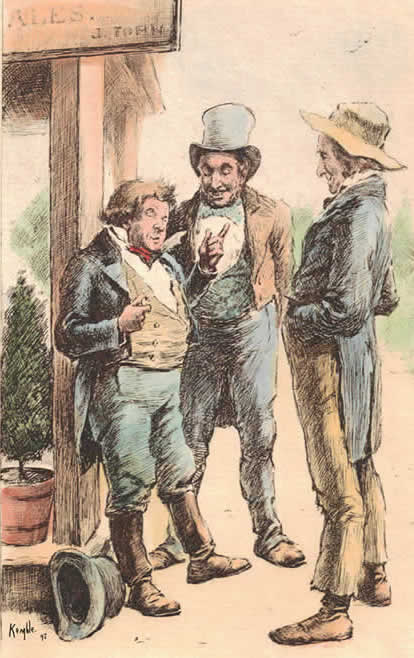
Kemble's "Buckstone
Training with the Rum Party" from the 1901 Riverdale
Edition
Scholarly Misinterpretation of Kemble's Roxy
Kemble's previous style of depicting black people as unattractive caricatures
was unchanged throughout Pudd'nhead Wilson. His drawings of the central
character Roxy, who was only 1/16 black, depict a less attractive woman
than the illustrations of her by Louis
Loeb which had appeared in the Century Magazine serialization.
Kemble's image would be the one presented to the greatest number of American
readers for years to come and one illustration in particular became the
source of scholarly misidentification and misinterpretation.
The 1899 edition of Pudd'nhead Wilson features two illustrations
of Roxy, both in the company of blacks. In 1901 American Publishing Company
authorized the Underwood
Edition which contained fewer illustrations. Only one illustration of
Roxy was used and it was featured prominently as a frontispiece. The decision
to present the below illustration as the first one a reader would see was
repeated by Harper and Brothers in subsequent uniform editions. It has been
a source of misunderstanding for critics who were not adept at reading the
picture and who never had an opportunity to see Kemble's other illustration
of Roxy.
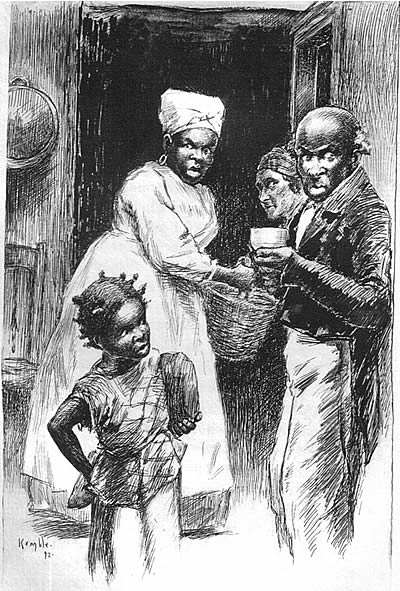
Kemble's "Roxy
Harvesting Among the Kitchens" was featured as the frontispiece of
uniform editions after 1901.
Her body is hidden behind the two black adults and only her face is shown.
Some critics concluded the prominent black woman was Kemble's misinterpretation
of Roxy.
Further discussion of Kemble's illustrations is available online at the
University of Virginia website in an article titled "Illustrating
Pudd'nhead."
Frank M. Senior, Illustrator
Frank M. Senior (b. 1849 - d. 1903) was a relatively obscure
illustrator at the time he got the assignment from Frank Bliss for the majority
of the illustrating work for the 1894 first edition of The Tragedy of
Pudd'nhead Wilson and the Comedy Those Extraordinary Twins. Senior remains
relatively unknown today. Benjamin Griffin's research on Senior published
in the 2024 Works edtion of Pudd'nhead Wilson reveals he was
born in Hartford, Connecticut and became deaf in childhood from scarlet
fever. He was educated at the New York Institution for the Deaf and Dumb.
A search of the U.S. Censuses provides further clues to his background.
He was the son of a tinner named Thomas Senior, born in Scotland, and his
wife Amanda, born in Connecticut. An article in the Brooklyn Daily Eagle
on June 20, 1898 indicates Senior was a director of Cox Engraving Company
of New York City. Griffin also publishes text of a letter that Senior wrote
describing his work on the first edition (Works edition, p. 578).
A death list in The New York Times published on April 17, 1903 listed
Senior by name as dying on April 15 in Brooklyn without any additional details.
Senior contributed only one illustration for the 1899 uniform
edition of Pudd'nhead Wilson and Those Extraordinary Twins. The full-page
drawing served as a frontispiece for the section of the book titled "Those
Extraordinary Twins." It is a revised version of his same illustration
from the first edition and it is unknown if he or someone else revised the
frontispiece..
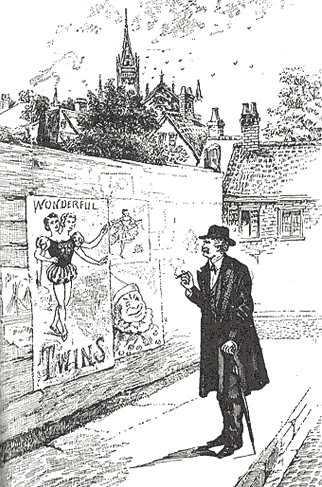
Senior's
1894 illustration
"I Thought I Would Write a Little Story" |
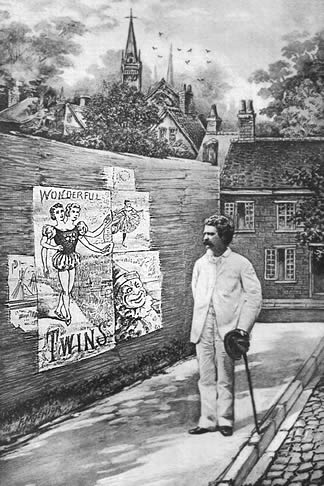
Senior's
1899 revised illustration
"I Thought I Would Write a Little Story" |
Senior's revised illustration featured an actual photograph of Mark Twain
in a white suit cut out and imposed over the original illustration which
featured extensive shading and detail.
References
Brennan,
Jonathan. Mixed Race Literature. (Stanford University Press, 2002).
"Brooklynites
Interested," Brooklyn Daily Eagle, 20 June 1898, p. 7.
"Charles
Noel Flagg Dies Suddenly," The Hartford Courant, 11 November 1916,
p. 8.
"Deaths
Reported April 16," The New York Times, 17 April 1903, p. 9.
"Edward
Windsor Kemble," Book Buyer, Volume 11, July 1894, pp. 293 - 296.
Online via google books.
"E.
W. Kemble Dies, Noted Pen Artist," The New York Times, 20 September
1933, p. 21.
Graduate
School of Business Administration of Harvard University. (Cambridge, 1917).
Online via google books.
Hill,
Hamlin. Mark Twain's Letters to His Publishers, 1867 - 1894. (University
of California Press, 1967).
Kemble,
Edward Windsor to Frank Bliss, 16 May 1898. (Kevin Mac Donnell collection.
Quoted in personal correspondence from Mac Donnell, 22 May 2004).
Osborn,
Norris Galpin. Men of Mark in Connecticut. (William R. Goodspeed, 1906).
Online from google books.
Rasmussen,
R. Kent. Critical
Companion to Mark Twain, Volumes I and II. (Facts on File, 2007).
Twain,
Mark. The Tragedy of Pudd'nhead Wilson and the Comedy Those Extraordinary
Twins. (Oxford University Press, 1996).
_____.
The Works of Mark Twain: Pudd'nhead Wilson with Those Extraordinary Twins.
Edited by Benjamin Griffin. (University of California Press, 2024).
Who
Was Who In America, Vol. 2. (The A. N. Marquis Company, 1950).

